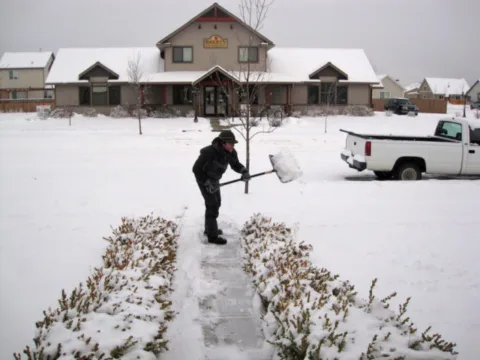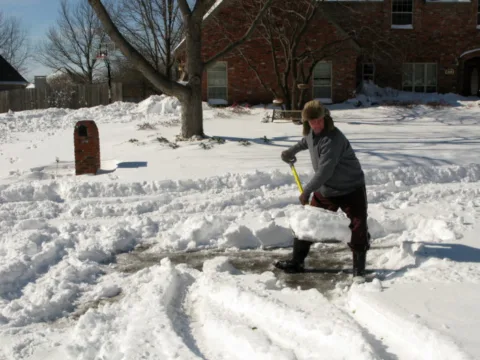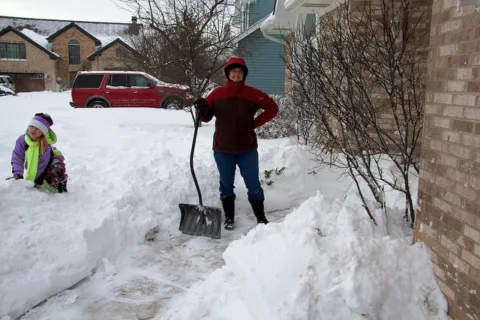Shoveling snow can feel like moving a ton of bricks sometimes.
There’s a reason people call that wet, heavy white stuff heart attack snow.
Shoveling Snow And Heart Attacks
According to the American Journal of Cardiology and Lancet, the number of ischemic heart disease deaths rose by 22% during the week of a major blizzard and stayed above average for the following 8 days.
A study from the Centers for Disease Control suggests 1,200 Americans die during or after a blizzard each year.
Of course, that’s not suggesting that snow shoveling is any more risky to your health than riding your bike, going for a swim, or taking a jog.
But what these figures do suggest is that a lot of people who have sedentary lifestyles or are generally unfit put themselves at risk for severe, acute health problems when they engage in a task as physically demanding as shoveling show. And that’s where the term heart attack snow comes from.
The Dangers Of Shoveling Snow… Especially Wet Snow
Why is wet, slushy snow so much harder to move around than dry, fluffy snow?
You may be surprised at how much more wet snow weighs than dry snow:
- A shovel full of dry snow may weigh as little as 5 pounds.
- A shovel load of wet snow is as heavy as 20 pounds.
That’s one huge difference! It’s like picking up a bag of sugar versus half a sack of concrete. No wonder shoveling wet snow can be so dangerous for some unfit people.
Of course, lifting 20 pounds at the end of a shovel can be a workout for even the healthiest people — it’s especially taxing for those who have to shovel a whole driveway after blizzard conditions. Snow shoveling can be downright dangerous for people who spend most of their time sitting at a desk.
Sometimes, people who are unfit have little choice but to take up their snow shovel and plow their sidewalk or driveway.
It typically costs anywhere between $30 and $100 to hire a professional snow plowing service, though costs vary by the size of the driveway and the amount of snow that’s fallen. If there’s any ice to chip away, then the cost goes up.
Signs That Snow Shoveling Is Hurting You
So, how do you know if snow shoveling is causing you health problems?
Here are heart attack symptoms to watch out for:
- Discomfort or aches in your chest
- Pain in your upper body that may radiate into your arms, shoulders, or jaw; this pain may occur without chest discomfort
- Nausea and/or vomiting
- Abrupt sweat that might also be accompanied with cold, clammy skin
- Dizziness or lightheadedness
- Shortness of breath
- Stomach pain
If you experience any of these symptoms, immediately stop the snow shoveling and call 911.
Best Tips For Shoveling Snow
I’m no doctor, nor do I play one on TV, so you should check with a medical professional before taking any my snow shoveling tips. However, there are plenty of helpful ways to make shoveling snow easier and — hopefully — less harmful to your health.
Additionally, you should:
- Move snow the shortest distance possible. If you’re going to be lifting snow, you might as well not have to dump it too far away.
- Push the snow rather than lift it. This will exert less stress on your body.
- Wear loose-fitting clothes.
- Don’t rush the job. It’s better to take your time shoveling snow and take frequent breaks if you tire quickly.
- Take smaller loads of snow. Don’t pile too much snow on your shovel, especially if it’s wet snow.







